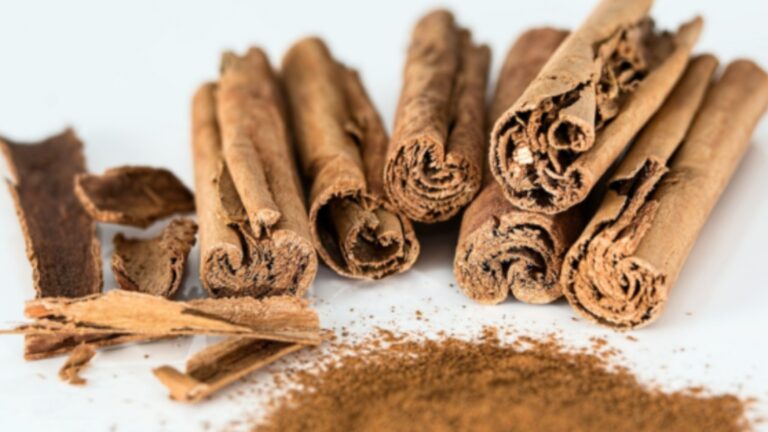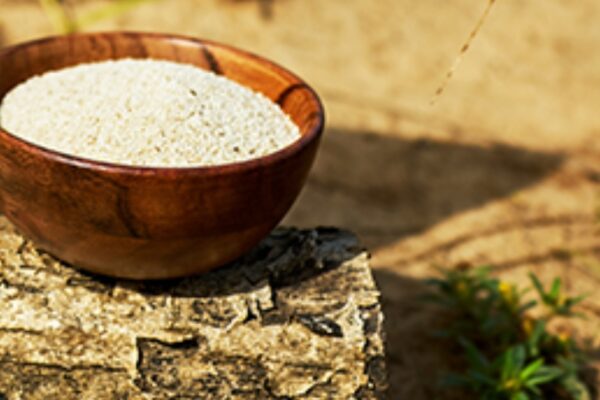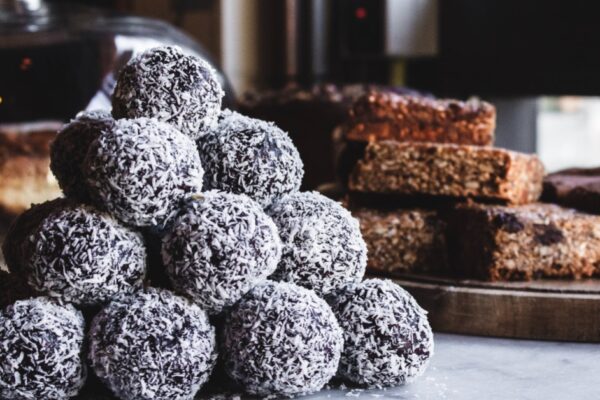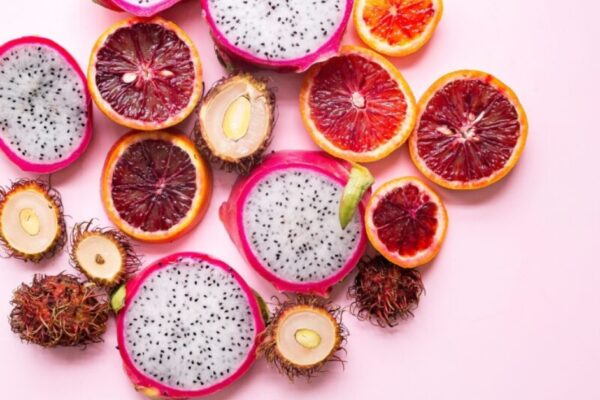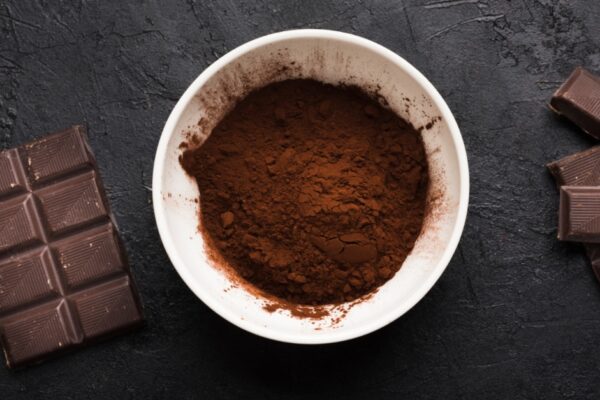Cinnamon is a globally consumed spice and many households have it in their spice rack. There are around 250 species in the cinnamon family but the two main types of cinnamon are Ceylon and Cassia. Most probably you are consuming the cheaper and inferior quality cinnamon. If taken regularly and in high quantities, this cheaper cinnamon can put your health at risk.
Whether it is a key ingredient like in cinnamon rolls or used as a topping in eggnogs, its exotic flavour will surely elevate your taste buds to the next level. Personally, I love cinnamon and tend to incorporate it in many of my food recipes. Being a regular consumer of this spice, both for its all-time known health benefits and the added twist it gives to taste, I was concerned about its side effects. Here you find the reasons why you should update your spice rack to also include ceylon cinnamon.
What is cinnamon? | Ceylon vs Cassia Cinnamon | Why Ceylon is better? | 7 Benefits of Ceylon | Cinnamon recipes | Tips when shopping for Ceylon | Where to buy Ceylon | The Crux
What is Cinnamon?
Cinnamon is a spice derived from the inner bark of the Cinnamomum Verum tree that belongs to the Lauraceae family. The unique properties of cinnamon mainly come from its essential oils and other derivatives, namely Cinnamaldehyde. These cinnamon essential oils possess multiple health properties such as anti-cancer, anti-inflammatory, and antioxidant properties.
For centuries, cinnamon fulfilled various purposes. For instance, in Ayurvedic medicine, cinnamon serves in treating respiratory and digestive problems. Ancient Egyptians used cinnamon as a perfume during embalming, while the Romans used it in funeral pyres to cover the smell of burning flesh.
Ceylon Cinnamon Vs Cassia Cinnamon
Amongst the different types of cinnamon, the most popular are Ceylon cinnamon (Cinnamomum zeylanicum), also known as true cinnamon (or real cinnamon), and Cassia cinnamon (Cinnamon cassia).
Ceylon is primarily produced in Sri Lanka (formerly Ceylon) and many refer to it as Sri Lanka cinnamon. Other countries include Madagascar and Southern India. In contrast to Cassia, Ceylon has a mild sweet flavor, is lighter in color, and has a more delicate aroma.
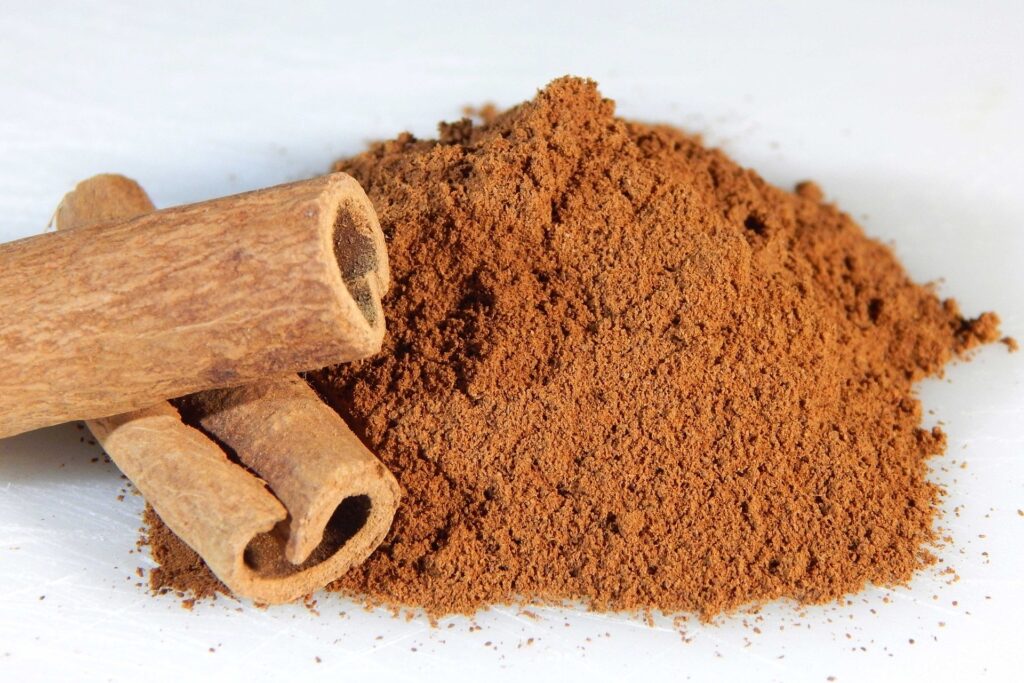
- Tan brown colour
- Multiple-layered quills
- Fragile quills and easily broken
- Delicate and sweet taste
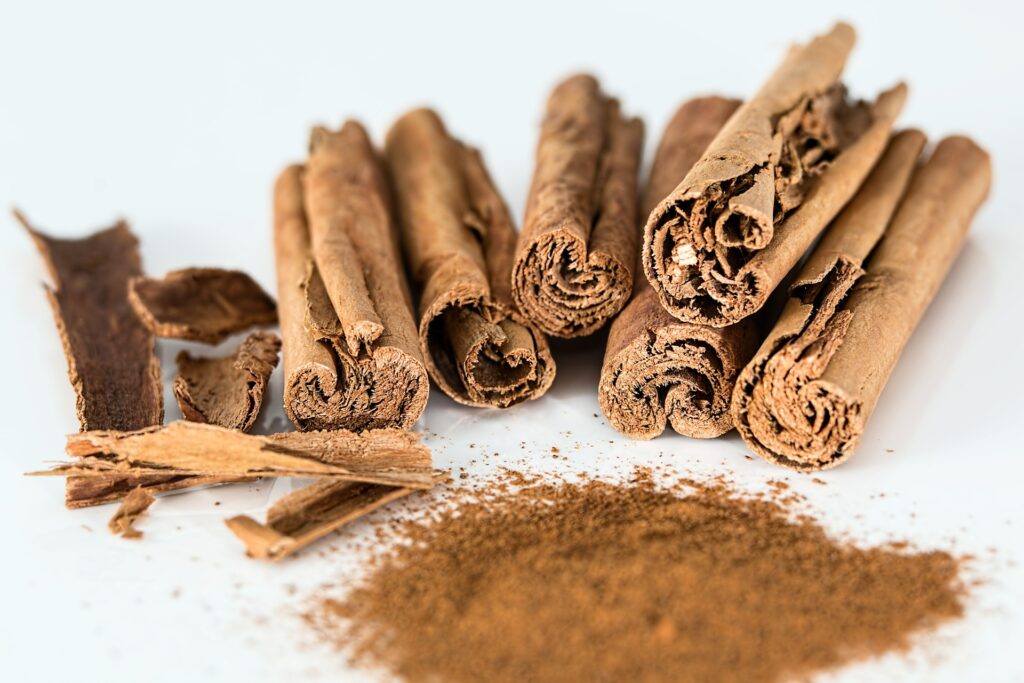
- Reddish-brown colour
- Uneven thick quills
- Difficult to break
- Pungent taste
Cassia cinnamon is widely used across the globe in food preparation. For years, it has been used in traditional Chinese medicine for alleviating stomach and muscle spasms, treating infections and the common cold, preventing nausea and vomiting, and controlling gas and diarrhea.
Why Ceylon Cinnamon Is Better?
The main difference between Ceylon and Cassia cinnamon is the level of coumarin content found in each variant. Coumarin is a natural plant compound possessing blood-thinning (or anticoagulant), carcinogenic and hepato-toxic properties. One teaspoon (2.6 grams) of ground Cassia cinnamon contains between 7 to 18 mg of coumarin. On the other hand, one teaspoon of ground Ceylon cinnamon contains only between 0.028 to 0.072 mg (250 times less than Cassia)1.
Tolerable Daily Intake of Coumarin
The Tolerable Daily Intake (TDI) of coumarin is 0.1 mg per kilogram (kg) of body weight2. In the case of an adult weighing 80 kg, the TDI is 8 mg (80kg x 0.1 mg) of coumarin per day. At these levels, a single teaspoon per day easily places many average-sized adults at risk of liver damage! Extra care should be taken when it comes to children since their TDI of coumarin is much lower!
TIP
The following formula guides you in calculating the tolerable daily coumarin intake in terms of the number of teaspoons (tsp) of Cassia cinnamon:
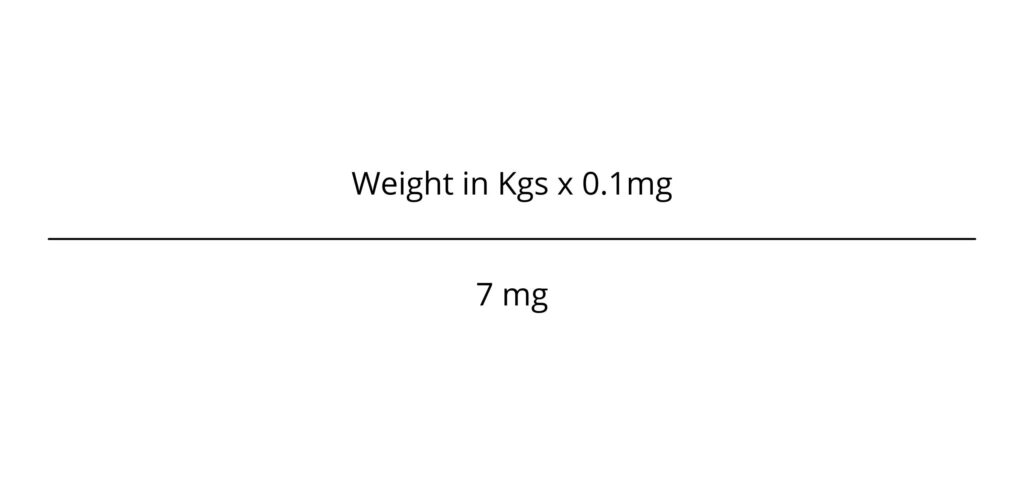
Market Trends
Since Ceylon cinnamon has negligible coumarin content, the tolerable daily Ceylon cinnamon dosage is much higher than that for Cassia. As a result, worldwide demand for Ceylon is constantly growing over time. As Grand View Research highlight in their market analysis, in 2018 Ceylon cinnamon held more than 35% share of the global market. Projections show similar trends through to 2025.
The world’s leading consumer of Ceylon cinnamon is Mexico due to the popularity of Ceylon in numerous Mexican dishes. Spain (Mexico’s former colonial master) also introduced Ceylon cinnamon to Europe around 400 years ago and developed a series of sophisticated recipes with complex flavors using Ceylon and other spices. Europe is also emerging as a significant consumer of Ceylon with the demand being mostly generated by Belgium, the U.K., and Italy3.
According to a market research report by Fortune Business Insights, the top players operating in the global cinnamon market include Pure Ceylon Cinnamon, and Biofoods Pvt Ltd4.
7 Benefits of Ceylon cinnamon
Various medical studies suggest that Ceylon Cinnamon has many beneficial health properties5.
1. Blood Sugar Regulation
According to the International Diabetes Federation, in 2019 people with diabetes amounted to 463 million. This means that in every 11 adults, one person has diabetes. In the EUR region, more than 59 million people have diabetes and projections show that this will increase to 68 million by 2045. In Malta, 12.2% (or 40,500) of the population had diabetes in 2019.
Cinnamtannin B1 is a compound found in Ceylon cinnamon that contributes towards lowering glucose absorption after meals and increasing insulin sensitivity. Therefore, Ceylon can help your body regulate blood sugar levels more effectively and reduce your risk of hypo– or hyperglycemia incidents.
A 2012 review article published in “Diabetic Medicine”, uncovered beneficial effects for diabetics after carrying out a specific examination of 16 studies on Ceylon cinnamon. These beneficial effects were obtained without any resulting toxicity to the liver and kidneys. Nevertheless, further randomized clinical trials are required to establish therapeutic safety and efficacy.
2. Lower Blood Pressure and Improved Cholesterol Levels
Studies show that Ceylon cinnamon reduces high blood pressure6 in rats and lowers blood lipids (fats)7. These two aspects contribute towards improving cardiovascular health.
3. Antioxidant
The antioxidant content found in Ceylon amounts to 65.3%. This acts in neutralizing free radicals and in preventing or reversing the cellular damage they cause5.
On the bases of human study conducted in 2006, Ceylon cinnamon increases antioxidant levels and improves other markers of free radical activity8.
4. Immune Booster
The cinnamon essential oil, Cinnamaldehyde, exhibits anti-microbial and anti-parasitic action against a wide range of harmful bacteria, fungi, and viruses. Medical studies also show the potential effectiveness of Ceylon cinnamon against influenza, tuberculosis, Candida, and the human rota-virus5.
5. Anti-inflammatory
In many cases, inflammation is the root cause of arthritis or joint pain, and of certain types of headaches. Since Ceylon cinnamon’s active ingredient, Cinnamaldehyde, possesses anti-inflammatory properties, this spice can help in easing your aches and pains9.
6. Improve Gut Health
The anti-secretagogue and anti-gastric ulcer properties found in Ceylon contribute towards relieving the pain associated with Irritable Bowel Syndrome (IBS).
7. Prevention against Alzheimer’s Disease
Medical studies show that Ceylon cinnamon inhibits the aggregation of tau protein and filament formation, both of which are considered to be the hallmarks of Alzheimer’s disease10.
Cinnamon Recipes
Here are some delicious recipe ideas that will make you fall head over heels over cinnamon. However, remember to use Ceylon cinnamon in your recipes!

- Drink Recipes: Baobab-Turmeric Latte, Moringa Latte, Hot milk with Cinnamon, Cinnamon Dolce Latte
- Breakfast Recipes: Cinnamon Spiced Cacao Porridge, Apple Baobab & Cinnamon Chia Porridge, Maple-Cinnamon Quinoa Granola, Baobab & Vanilla Protein Pancakes, Cinnamon roll pancakes, Cinnamon Vanilla Protein Breakfast Bites
- Main Dish Recipes: Simple Chicken in the Oven with Cinnamon and Lemon, Greek meatballs
- Sweet Recipes: Cinnamon rolls, Sticky Baobab Toffee Apples, Chocolate, Cinnamon & Moringa No-Bake Cookies, Spiced Puffed Rice Bars, Raw Pumpkin & Peanut Butter Cheesecake, Banana Ice Cream With Cacao Bar Chunks, Low-Carb Keto Fudge Banana Truffles, Cinnamon Cake, Cinnamon toast crunch
Tips When Shopping For Ceylon Cinnamon
Ceylon is equally potent whether you consume it in the form of Ceylon cinnamon sticks (or cinnamon quills) or in powder form. However, you may find Ceylon cinnamon powder much easier to incorporate in most of your recipes.
Many times, the packaging of powdered cinnamon does not specify the type of cinnamon it is. Since Ceylon tends to be specifically labeled, it’s highly probable that the cinnamon found in grocery shops is the Cassia variant.
When it comes to the quills, the rolled cinnamon bark of Ceylon is multi-layered and thinner (refer to the right in the photo) than that of Cassia (refer to the left in the photo). You will also recognize Ceylon sticks as they feel like brittle tobacco leaves.
Where To Buy Ceylon Cinnamon
When it comes to buying Ceylon cinnamon in Malta, I opt for Organic Ceylon Cinnamon Powder by CM Naturals, which comes in an airtight container of 60g. It is a bit pricy since it is organic Ceylon cinnamon powder. However, its aroma and taste are amazing and the best Ceylon cinnamon I have tasted so far! You can buy this product directly from MK Pharma through their online shopping platform. MK Pharma offers free delivery for orders of €20 and over, otherwise, a charge of €5 applies. Alternatively, you can shop this same product from the outlets which MK Pharma serves, namely Good Earth, Greens Supermarket, Pavi and Pama Supermarkets, and Nutrition Empire.
Alternatively, you can grab the Ceylon cinnamon which Good Earth packages in-house, and costs around 5 times less than the organic cinnamon by CM Naturals. This Ceylon powder by Good Earth comes under the label Ground Cinnamon with its origin being Sri Lanka / Madagascar.
If you are not residing in Malta, you can purchase Simply Organic Ceylon Cinnamon on Amazon.
The Crux
If you consume more than 1 teaspoon of Cassia cinnamon on a daily basis, you should consider switching to Ceylon cinnamon in order to avoid the risk of toxicity of the liver and kidneys. Those on blood-thinning prescriptions should avoid consuming Cassia cinnamon.
The very low coumarin content in Ceylon or “true” cinnamon, makes it a healthier choice for daily consumption. Like anything else, it should still be consumed in moderation. When in doubt, make sure to refer to your healthcare provider.
Ceylon’s powerful anti-inflammatory, antioxidant and antimicrobial effects contribute towards reinforcing your immune health. This makes Ceylon perfect for all year round, particularly during the COVID-19 pandemic.
*This post includes products that Lifestyle Exquisite recommends to its readers. If you buy through the links on this page, a small commission may be earned
Sources
1 Blahová J, Svobodová Z. Assessment of coumarin levels in ground cinnamon available in the Czech retail market. ScientificWorldJournal. 2012;2012:263851. doi: 10.1100/2012/263851. Epub 2012 Jun 18. PMID: 22761548; PMCID: PMC3385612.
2 Abraham K, Wöhrlin F, Lindtner O, Heinemeyer G, Lampen A. Toxicology and risk assessment of coumarin: focus on human data. Mol Nutr Food Res. 2010 Feb;54(2):228-39. doi: 10.1002/mnfr.200900281. PMID: 20024932.
3 Grand View Research. Cinnamon Market Size, Share & Trends Analysis Report By Product (Ceylon, Cassia, Saigon, Korintje), By Application (Residential, Commercial), By Region, And Segment Forecasts, 2019 – 2025. August 2019.
5 Ranasinghe, Priyanga & Galappaththy, Priyadarshani. (2016). Health benefits of Ceylon cinnamon (Cinnamomum zeylanicum): a summary of the current evidence. Ceylon Medical Journal. 61. 1. 10.4038/cmj.v61i1.8251.
6 Nyadjeu P, Dongmo A, Nguelefack TB, Kamanyi A. Antihypertensive and vasorelaxant effects of Cinnamomum zeylanicum stem bark aqueous extract in rats. J Complement Integr Med. 2011 Jan;8. doi: 10.2202/1553-3840.1490. PMID: 22754922.
7 Javed I, Faisal I, Rahman Z, Khan MZ, Muhammad F, Aslam B, Ahmad M, Shahzadi A. Lipid lowering effect of Cinnamomum zeylanicum in hyperlipidaemic albino rabbits. Pak J Pharm Sci. 2012 Jan;25(1):141-7. PMID: 22186322.
8 Akram Ranjbar, Sara Ghasmeinezhad, Hosnieh Zamani, Ali Akbar alekirad, Akram Baiaty, Azadeh Mohammadirad & Mohammad Abdollahi. Antioxidative stress potential of Cinnamomum zeylanicum in humans: a comparative cross-sectional clinical study.
9 Pannee C, Chandhanee I, Wacharee L. Antiinflammatory effects of essential oil from the leaves of Cinnamomum cassia and cinnamaldehyde on lipopolysaccharide-stimulated J774A.1 cells. J Adv Pharm Technol Res. 2014;5(4):164-170. doi:10.4103/2231-4040.143034.
10 Ranasinghe P, Pigera S, Premakumara GA, Galappaththy P, Constantine GR, Katulanda P. Medicinal properties of ‘true’ cinnamon (Cinnamomum zeylanicum): a systematic review. BMC Complement Altern Med. 2013 Oct 22;13:275. doi: 10.1186/1472-6882-13-275. PMID: 24148965; PMCID: PMC3854496.

